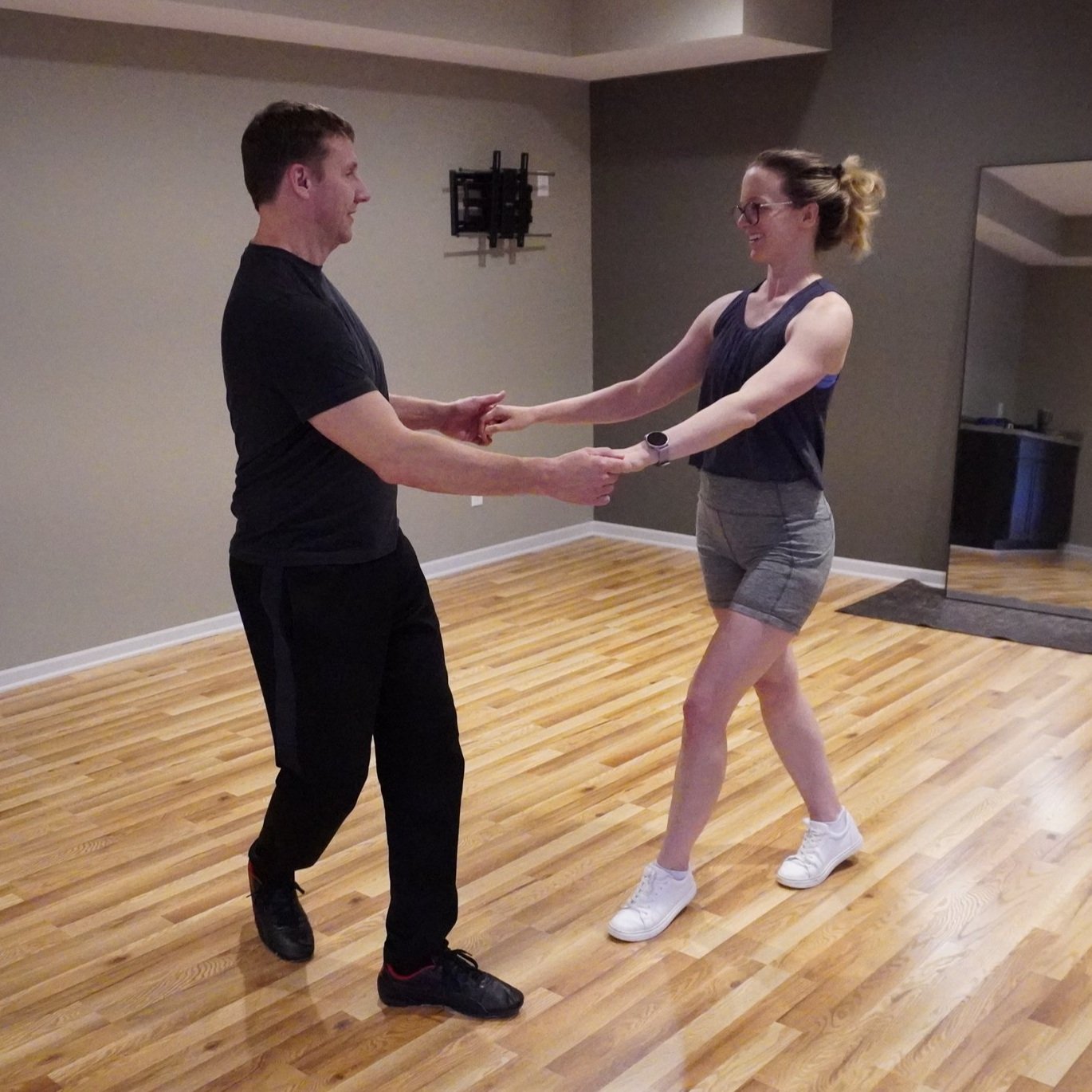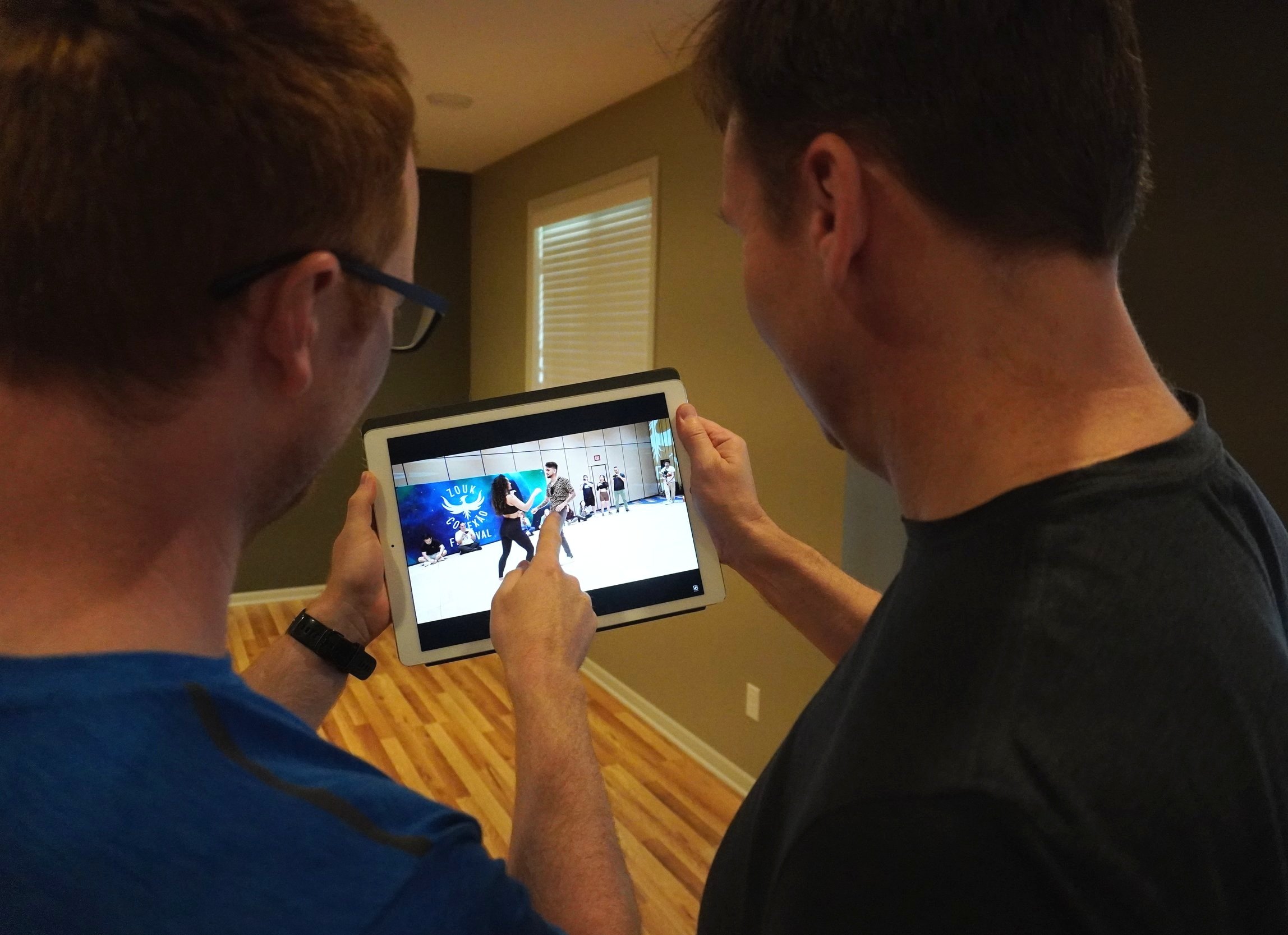10 Tips To Improve Your Zouk Dancing
1. Start getting around other dancers and make them your friends.
It has been said that you will become similar to the five friends you spend the most time with. If you start spending time with people who already dance, they will often inspire you and lift you up to the next level. They may tell you about their struggles and how they overcame them, as well as give you tips and ideas on ways to train or advance. They will often push you when you don’t feel like training or social dancing. They can be people who you travel with, split lessons with, or practice with. If you are new to dancing, being around passionate dancers will rub off on you and influence you in ways that you don’t expect.
I remember when I was new to my first partner dance, salsa. One of the bachata instructors absolutely loved the music, and he convinced me to go to my first festival in Chicago. He said that going to a salsa congress would change the way I thought about dancing. I didn’t really believe him at the time, as I had been dancing for about a year-and-a-half and thought I knew everything about the dance scene. However, when I went to my first congress and saw all the other dancers, classes, instructors, and professional performers, they blew my mind and really changed the way I looked at partner dancing. Our little scene was quite small compared to the national scene. I never would have gotten this new perspective if I didn’t hang out with someone who was incredibly passionate and knowledgeable about Latin dance and music.
2. Listen to Zouk music and get familiar with counting the boom chick chick.
One of the best ways to improve your dancing in the beginning is to get familiar with the music and practice hearing the boom chick chick rhythm and timing. I highly recommend listening to traditional Lambada and Zouk music, along with popular remixes, as well as educating yourself on the history of this music. Part of understanding a dance is learning the history, traditions, and customs of the culture that the dance is from. You will undoubtedly learn more about Portuguese and Brazilian culture as you dive into Zouk music and understand what it means. Also, going deep into timing and rhythm for Zouk and Lambada will greatly improve your dancing. Being able to dance lyrically – on time or with the instruments – will also give you versatility in your dancing. In order to do this well, being familiar with the music and patterns will help you be able to hit the one with some practice.
3. Go to group classes as much as possible.
Going to group classes is an opportunity to learn the dance from a trained instructor who will be able to accelerate your progress. Through these classes, you can meet people, make friends, and find those who may want to meet up and practice. Local dance studios likely will also have organized practicas or socials where you can refine your skills. Having a structured way of learning the movement will dramatically speed up your progress. Partner dancing is best learned in layers, and many instructors have studied and utilize a well-established pedagogy that is proven to improve your dancing. Group classes are also an affordable way to learn the fundamentals of the dance!
4. Find a practice partner.
Finding a good practice partner may be one of the most important tips in this list. Peer-to-peer training is a great way to get free feedback and grow your skill. The first rule in finding a practice partner is that there is no perfect partner. It may be difficult to find someone who is your exact match in terms of skill level, goals, schedule, etc. Instead, I suggest finding a practice partner who has strengths you are looking to grow in. I recommend that leads go to class for a while and then ask a follow to practice who may be newer to the dance than they are. Often followers can learn faster than leads, especially in the beginning, and if the lead has a head start, it will be easier for them to keep up.
As an aside – I also recommend that you don’t ask someone to practice who you are looking to date. If you want to date someone, ask him or her on a date. If you want to practice, keep that person as your practice partner. Communicating this boundary upfront can be helpful. This will keep you focused on improving without the distraction of romance. Last, I also recommend having multiple practice partners in the beginning. If you can find two or three people to practice with, then if they have a cancellation, you’ll still have some people to dance with.
5. Start a solo training practice.
Some people love practicing on their own, and some people don’t. There’s an expression that practicing on your own is easy to do and easy not to do. If you are someone who benefits from accountability and structure, this may be a little harder for you. Just know that you can start small. Try practicing for five minutes a week. Things to work on during solo training include basics, foot articulation, turns, and fundamental patterns, all of which will greatly improve your partner dancing. After you have this routine established, try adding on another five minutes; eventually, you can try doing this multiple days a week. Additionally, strength and flexibility training are things you can do outside of class that will benefit your dancing. Last, I recommend periodically recording yourself so that you can see your progress and take note of things you like, as well as areas you want to continue to improve.
6. Take private lessons.
Taking private lessons has probably had the largest impact on improving my dancing. They are a more expensive option, but there is no substitute for a trained eye to give you the feedback you need. My motto has become, “group classes to learn patterns, private lessons to learn technique.” Many instructors have trained for years, if not decades, and they will be able to notice things that may take you a long time to figure out on your own. If price is an issue, you may be able to find a friend to split the cost with you.
7. Watch videos of your dancing and also others dancing.
This is my favorite free advice! When I first started partner dancing, my brain did not comprehend what was going on, so I watched dancing on the social dance floor, as well as YouTube and other social media platforms, for hours and hours. Eventually you will recognize the fundamental patterns that you are learning in class, and this will help you understand what more advanced dancers are doing to make the dance fun, playful, and musical. Learning common movements will give you a background on how people really perform the style that you’re interested in. Recording yourself and watching that will help because you’ll be able to compare your movement to people with more skill.
8. Social dance as much as you can.
Social dance as much as you can. It can be scary and intimidating to put yourself out there, especially when you are new to dancing. However, I recommend that you go out to social dance with other dance friends as much as possible. Plan with some of the people you have met in class, or get an accountability partner to make sure that you get out there. When I first started social dancing, I told myself that I would ask five people to dance, regardless of whether they said yes or no. Look for events at your dance studio or on social media to see what is happening in your town. Try to go to at least one dance a week and build from there. I liked to go out dancing the day after my class so that I could practice my new moves while they were still fresh. Repetition is the mother of learning, and the more social dancing you do, the better you’ll learn it, and the more fun you’ll have!
9. Dance with people with a variety of skill levels.
Dance with people who have been dancing longer than you. This may feel scary, but remember, they were once beginners too. You can pick up tips from more experienced dancers, and you will start noticing things that you never noticed before. You may see things that you like, and then you can try them. You may notice things like their frame and connection, footwork, and ways they move that will inspire you. Also, dance with people who are brand new to dance. If you have been dancing a while and have a few moves under your belt, this will allow you to give back and remember what it was like when you started. Often times, intermediate and advanced dancers start getting a large ego around their dancing and no longer want to dance with beginners. Dancing with beginners can be grounding, and their joy and excitement may also reinspire you to train harder.
10. Travel at least once a year to a Zouk congress or festival.
One of the most fun and exciting dance-related things you can do is travel to a Zouk congress or festival. You can get a group of friends together and either carpool or fly to the destination. Sharing a room with friends can also be a lot of fun. Weekend festivals will often have a large variety of classes and artists to pick from. These classes are usually included in the weekend fee and can give you exposure to new instructors from all over the world. Although more expensive, you may also be able to take a private lesson with a professional dancer who you have been admiring from afar. The social dancing often goes until late in the night, and you will get an opportunity to dance and make friends with people from all over the country.







